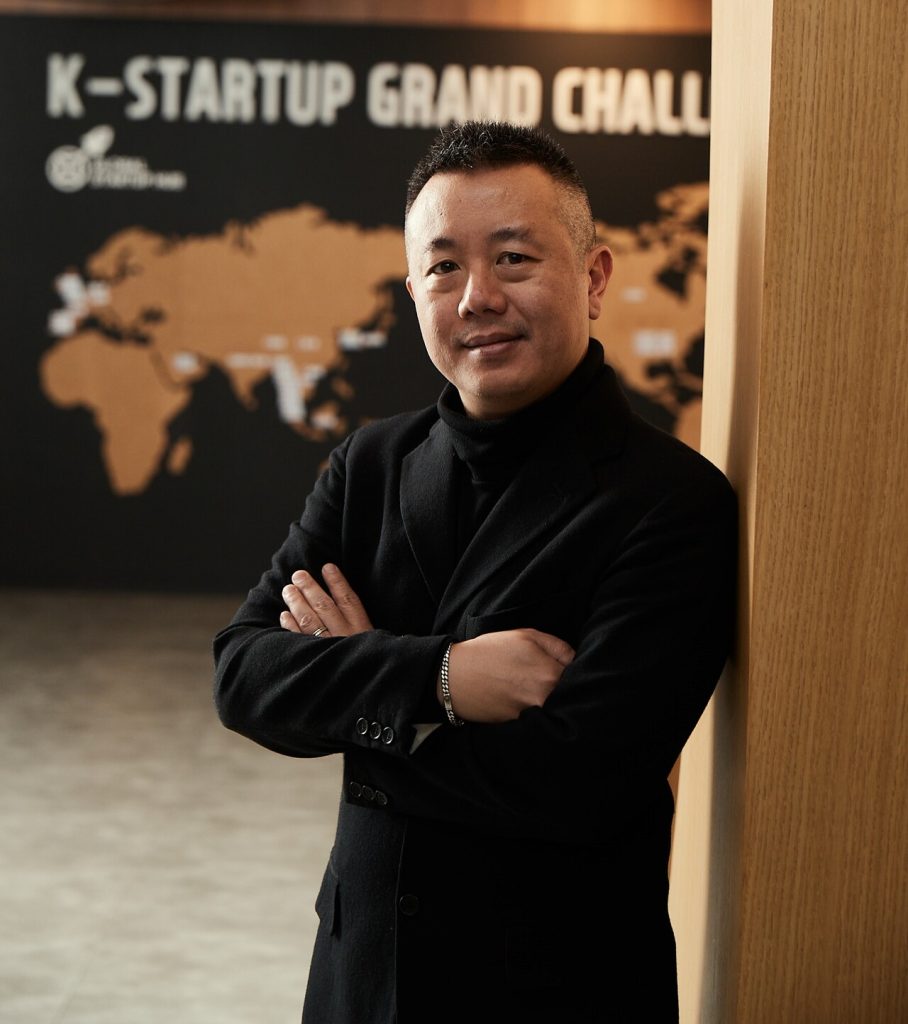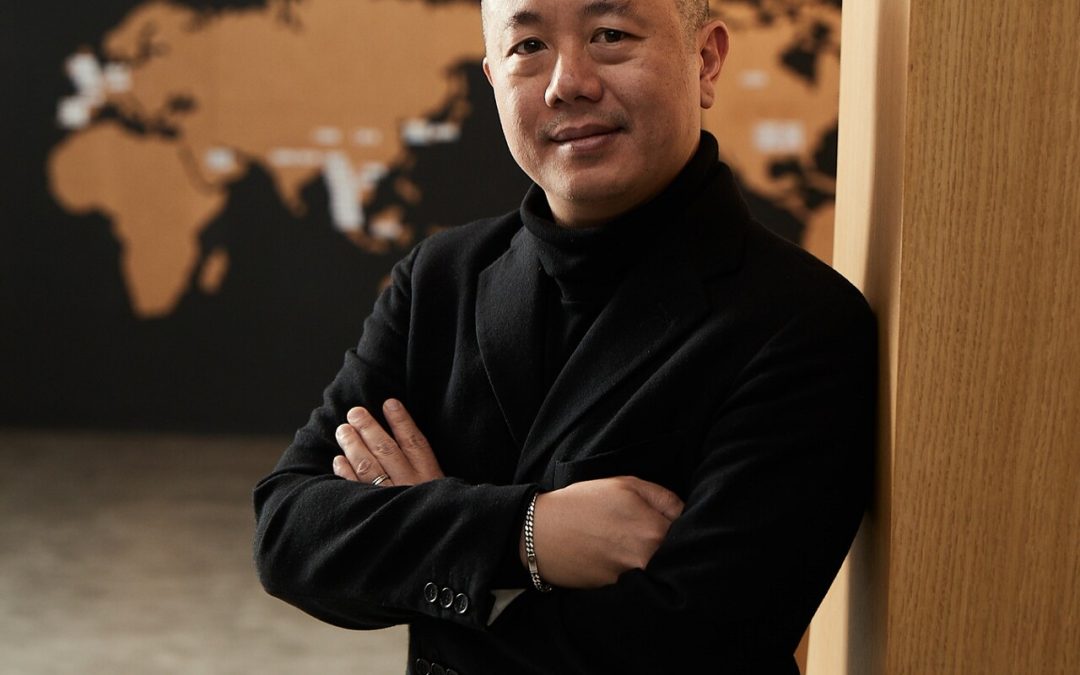TL;DR:
Open Energy, a pioneering startup in the EV and energy transition space, was featured by Fortune Korea for its revolutionary EV Battery Swap Robot. The article highlights the company’s vision for a cleaner, more efficient future, and recognizes its global momentum, industry backing, and mission to reshape the way electric vehicles are charged.
Original link: Is Battery Swapping the Future of EVs? A Conversation with the Founder of Open Energy
Full English translation:

Is Battery Swapping the Future of EVs? A Conversation with the Founder of Open Energy
Spotlight on Korea’s Top Startups from the K-Startup Grand Challenge
By Ta-Young Kim | Published April 11, 2025
As the global electric vehicle (EV) market grows at record speed, a new alternative is gaining attention to solve the limitations of current EV charging infrastructure: battery swapping.
Meet Tin Hang Liu, the Visionary Founder Behind Open Energy
Despite ongoing debates around EV adoption plateaus, the electric vehicle market shows no signs of slowing down. According to global market research firm Rho Motion, 17.1 million EVs were sold worldwide in 2024—an increase of 25% over the previous year.

[Photo credit: Kang Tae-hoon]
This explosive growth has been fueled by key advances in battery technology, especially faster charging, longer range, and improved safety. Today’s top EV companies are pursuing one or more of three strategies:
- extending driving range per charge,
- deploying ultra-fast charging systems,
- or expanding battery swapping networks.
One standout innovator in this third category is Open Energy, a startup founded in Hong Kong and now headquartered in Singapore. Its flagship solution—HyperSwap—uses an AI-powered robotic system to remove and replace an entire EV battery in just 2.5 minutes. While this concept might seem unfamiliar to Korean drivers used to plug-in charging, it’s already booming in China, led by EV giants like NIO and Aulton.
Fortune Korea sat down with Open Energy founder Tin Hang Liu on March 27th at the Startup Campus in Pangyo Techno Valley during the K-Startup Grand Challenge’s IR Global Inbound session. Here’s what he shared.
“Fast Charging Isn’t the Answer—It’s the Problem.”
Q: BYD recently unveiled ultra-fast charging tech that powers 400km of range in 5 minutes. Is that a threat?
Tin: It’s impressive, no doubt. But while it reduces charging time, it doesn’t address the fundamental flaws of fast charging.
Ultra-fast charging degrades battery health dramatically. Different parts of the battery cells get uneven stress, and the shorter the charge time, the higher the voltage and current, and the more damage it causes.
Batteries exposed repeatedly to fast charging lose up to 50% of their lifespan. That leads to nearly double the battery waste, terrible both economically and environmentally.
There’s also the safety risk. Think about it: when drivers plug into a fast charger, their battery is already hot from driving. That’s the worst time to charge. And yet, they blast it with 1000kW. Sure, it’s fast. But it comes with the risk of fire and system failure.
“We Swap in 2.5 Minutes—But with Zero Battery Stress.”
Q: Doesn’t battery swapping come with its own issues?
Not really. We don’t fast-charge the battery while it’s in the car. We swap it with one that’s already been charged under optimal, low-stress conditions.
Every battery removed is instantly scanned by AI for defects, imbalances, or anomalies. High-risk batteries are separated and stored safely. This reduces accident risk significantly.
By avoiding fast charging altogether, our batteries last 3 times longer. Plus, because we’re not racing against time to charge, we can use renewable energy like solar. Our new HyperSwap stations even have solar panels built into the walls to maximize this advantage.
And unlike traditional charging, swapping doesn’t stress the power grid. Imagine 1 million EVs plugging into fast chargers at once—you’d need the output of hundreds of nuclear plants. But we charge during off-peak hours, using slower, safer methods.
In the EU, off-peak electricity is up to 9 times cheaper. That’s a massive cost and infrastructure win for utilities and governments.
“In Korea, Battery Swapping Feels New. But Globally, It’s Already Working.”
Battery swap stations used to cost over $1 million to build. Now, companies like NIO and Aulton have brought that down to around $500,000 per station.
Ample and Aulton have raised hundreds of millions and already hit unicorn status. But…
“Open Energy Can Cut Swap Station Costs to $100,000.”
Q: Your competitors are way ahead—how do you plan to catch up?
Open Energy has been recognized globally for our technology. We were selected by PETRONAS FutureTech, Foxconn’s MIH Consortium, Hyundai Cradle Singapore, and finished Top 3 in Korea’s KSGC program.
Yes, our competitors have achieved a lot. But their tech isn’t invincible. Where they’ve reduced station costs to $500K, we can bring it down to $100K.
Their systems are also highly limited in battery compatibility. We’ve developed the world’s first multi-standard swap system, compatible with 80% of EVs currently on the market. One station can serve multiple vehicle types, reducing infrastructure duplication and cost.
At CNBC Converge in Singapore, C-level execs from global mobility and energy companies compared us to DeepSea, calling us a “deep tech company with game-changing cost advantages.”
We’ve also received support from major global corporations, including energy giants like Petronas and large funds like CDP Italy (Cassa Depositi e Prestiti). Others are currently under NDA until officially announced.
“Korea Became Our Second Home Thanks to KSGC.”
Q: Why did you open a branch in Korea last November?
The KSGC program changed everything for us. It felt like a “Startup Squid Game”—a tough but rewarding challenge led by the Korean government to support cutting-edge tech startups.
Before joining, we were focused on Southeast Asia. But KSGC opened up the Korean ecosystem and new partnerships.
Originally, we were planning to work with Foxconn for manufacturing, but their focus on small-format batteries didn’t fit our vision. Thanks to KSGC, we connected with Ace Engineering in Korea—a fantastic manufacturer with the exact components we need and a powerful supply chain. They’re helping us fast-track commercialization.
We’re now in discussions with five major Korean companies across batteries, EVs, AI, Mobility-as-a-Service (MaaS), and logistics. We’re also in talks with two municipalities for pilot deployments.
“Advice to Korea: Embrace Silicon Valley’s Feedback Culture.”
Q: Korea wants to be a global startup hub. Any advice from your YC experience?
Korea’s doing a great job—but there’s room to grow.
I recommend strengthening founder-to-founder feedback loops and adopting a performance-driven culture like Silicon Valley. Streamlining regulations, visas, and company registration would also make a huge difference—these processes are still too slow and complex.
There are also cultural differences when working with local companies, but the KSGC program helped us bridge those gaps.
Despite the challenges, Korea has a lot going for it—a tech-savvy population, strong government support, and world-class infrastructure. It could become a global startup powerhouse.
